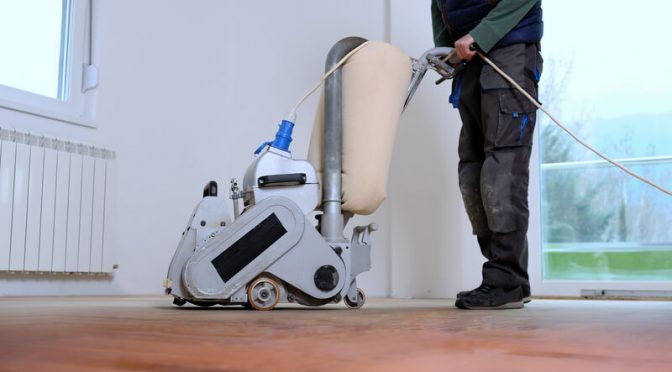Choosing between DIY vs professional floor sanding can be a tough decision. You can get great savings and a sense of accomplishment from DIY floor sanding, but it requires significant time, effort and skill. It’s possible to end up with an uneven finish, or even damage the floor if you don’t know what you’re doing. On the other hand, hiring a professional ensures expertise, efficiency and a polished finish, but it comes with a higher price tag. Professionals have the right equipment and experience to handle various floor types, but you can also hire great quality sanding equipment yourself. The choice ultimately depends on your own skill level, available time, budget constraints and what sort of finish you’re looking for.
Understanding DIY Floor Sanding
Before you start your DIY sanding project, you’ll need to do a little research and learn about your floor and choosing floor sanding options. Familiarise yourself with the different types of wood flooring, sanding techniques and the right grits for sandpaper, so you know which type of floor you have and how to treat it. The process usually requires tools including a drum sander, edger and buffer which can be rented to keep the costs down.
Before sanding, it’s important to thoroughly clean and repair the floor, giving you a smooth surface from the start. Also make sure you set aside enough time for the project, as the process involves multiple stages: coarse sanding, fine sanding and finishing. You can also follow these top DIY floor sanding tips to get a great finish.
If you’re a fan of DIY you’ll find satisfaction in revitalising your floor and enjoy great cost savings when choosing DIY over professional floor sanding. However, it’s essential to consider the learning curve, potential for mistakes and the physical demands of floor sanding by yourself. Despite these challenges, the hands-on experience and accomplishment of transforming a floor can make the DIY approach rewarding if you’re willing to invest the time and effort.
Challenges and Limitations of DIY Sanding
When you choose DIY vs professional floor sanding there can be challenges due to the lack of professional-grade equipment, the steep learning curve and the potential for mistakes. Although hiring tools from The Floor Sander Hire Co means you’re getting the best tools for the job. There is a steep learning curve for mastering sanding techniques, understanding wood characteristics and selecting appropriate grits, but investing time to learn about these before you start can be invaluable. On top of this, there is a risk for errors when DIY floor sanding, such as over-sanding or uneven finishes. While the promise of cost savings and personal satisfaction may motivate you to do it yourself, acknowledging these challenges is crucial for a realistic assessment of DIY floor sanding projects.
The Advantages of Professional Floor Sanding
Choosing a professional floor sander for your job can bring a host of benefits, including unparalleled expertise, efficiency and access to high-quality equipment. Skilled professionals have a great understanding of various wood types, meaning they can use the most appropriate sanding techniques and won’t make beginner mistakes. It’s also likely to be quicker to hire professionals for your project, as they work efficiently and skillfully with the best equipment so your job will be completed faster than doing it yourself. It’s also worth considering the excellent finish you’ll get from a professional, and there might even be savings when considering the cost of some DIY mistakes that can add up. While the cost may be higher, the combination of expertise, efficiency, and a guaranteed outcome makes the investment in professional floor sanding a compelling choice if you’re looking for a stress-free and time efficient option.
Cost Comparison: DIY vs Professional Sanding
Let’s break down the likely costs of choosing both DIY and professional floor sanding. Opting for the DIY route may seem initially cost-effective, but expenses like equipment rental and the cost of putting mistakes right can add up. You’ll need to factor in rental fees for professional-grade sanding tools, extra supplies like sandpaper and finishing materials and a contingency fund for any mistakes and correcting them. It’s also important to factor in your time working on the project; set aside plenty of time as it’s a job that has lots of phases.
On the other hand, hiring professional sanding services comes with a higher upfront cost, but it means you don’t have the costs of personal tool investments and it minimises the risk of costly mistakes. And the value of hiring a professional is also seen in the time you’ll save and the stress they take away.
Assessing Your Specific Situation
When deciding between DIY floor sanding and hiring professionals, it’s important to assess the specifics of your project. Consider the size and condition of your floor – larger or more damaged areas may benefit from professional expertise. Think about your own skill level and familiarity with sanding techniques, acknowledging the learning curve involved. Assess the time available, recognising that DIY projects can be time-consuming. Factor in long-term results and the value of your investment; while DIY may seem cost-effective upfront, professional services offer efficiency and the peace-of-mind of knowing you’ll get a great result. Balancing these considerations help you make the right choice for your individual floor.
If you choose the DIY route, for the best quality equipment for your sanding project, get in touch with Floor Sanders London. Their expertise and professional experience is invaluable in helping you choose the right equipment for your project.

